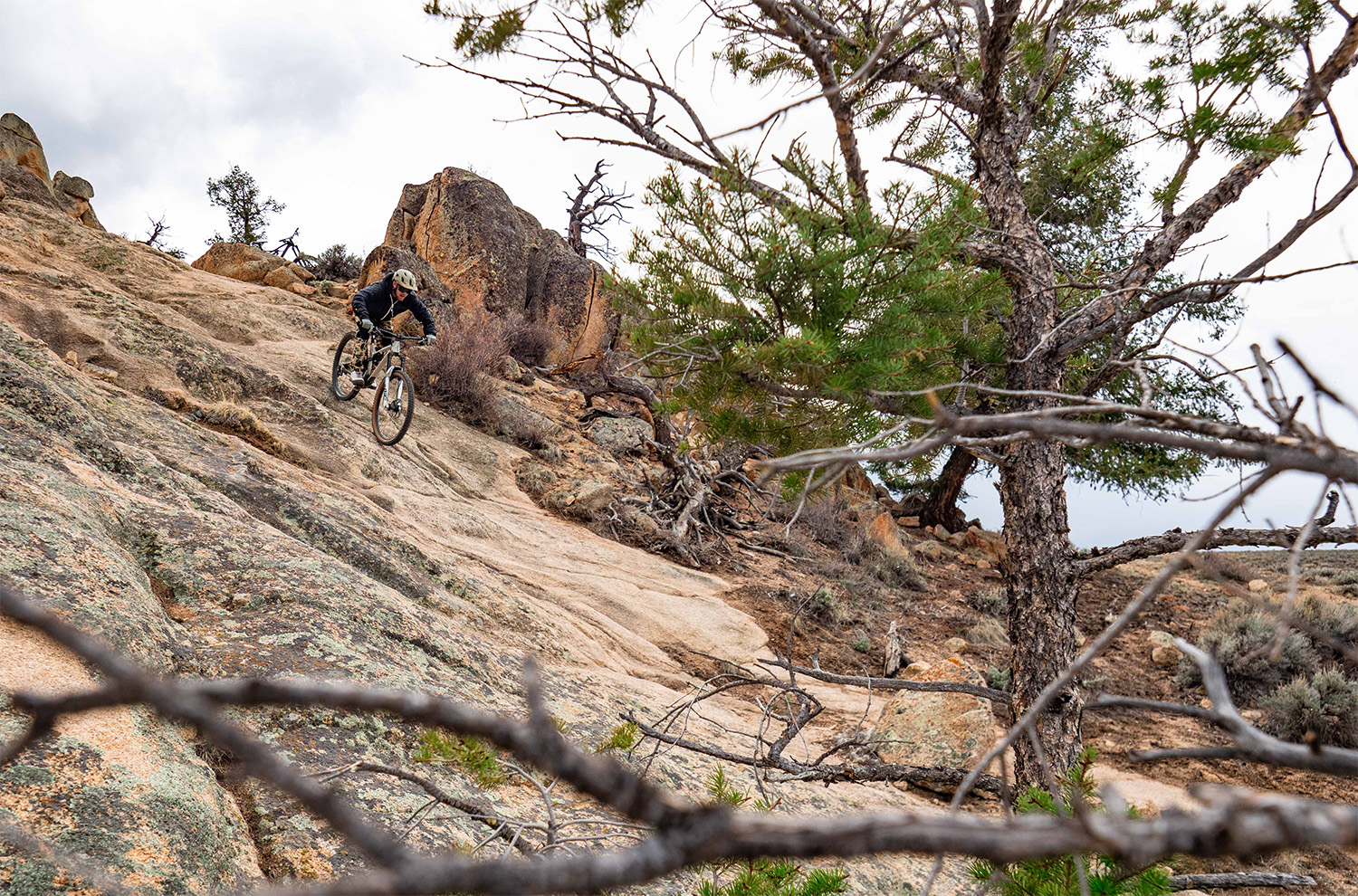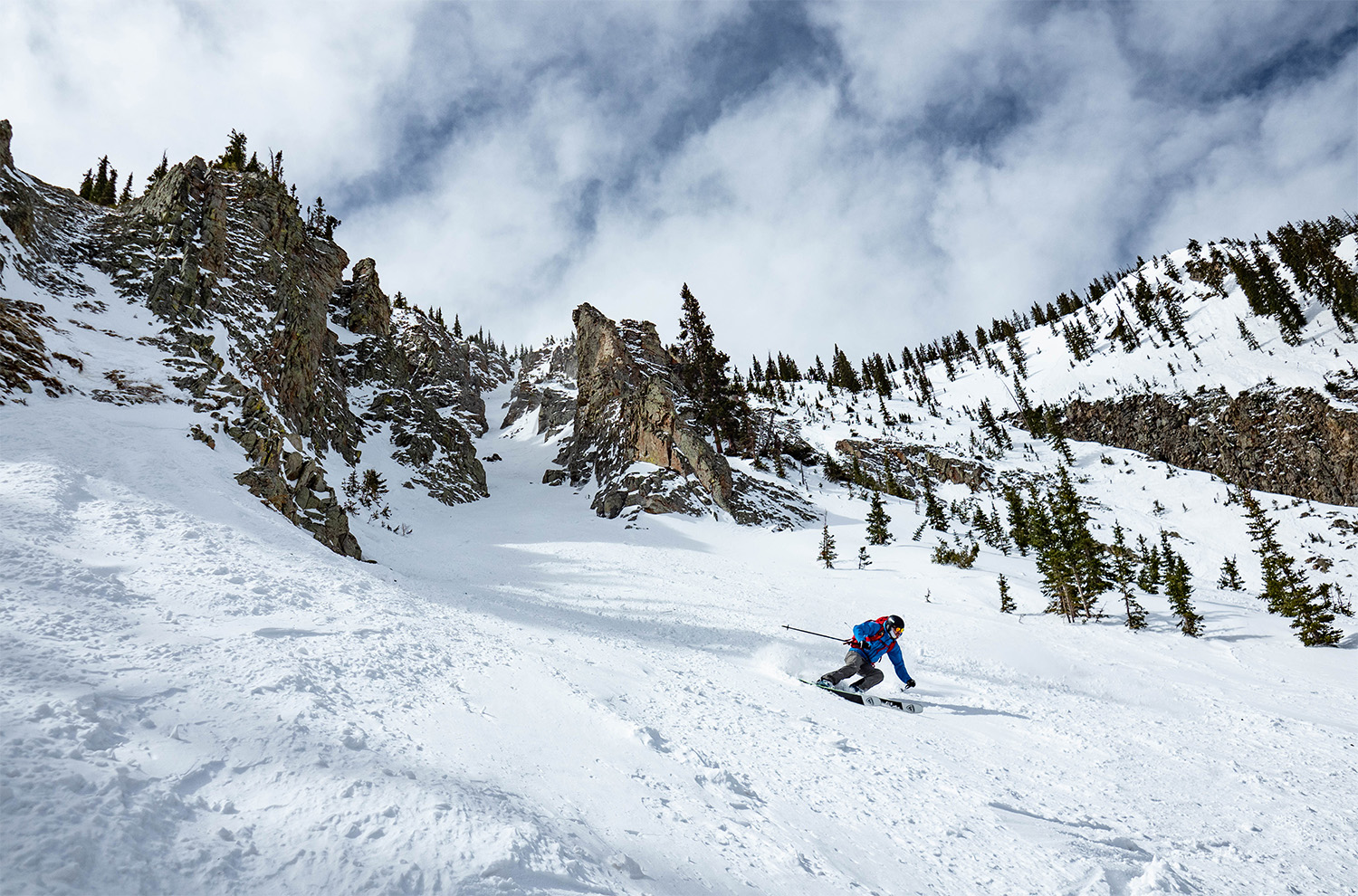Open Mic is the series on BLISTER where we invite various people in the outdoor industry to say what they have to say, and share whatever it is they feel like sharing at this particular point in time.
Today, our managing editor, Luke Koppa, provides an update on a very time-sensitive message:
[Note: On 6.28.25, Mike Lee removed his latest land sale provision from the reconciliation bill, so it appears that public lands will not be sold through this bill — largely thanks to all of the individuals across the country who voiced their opposition. To anyone who did, thank you — Luke.]
Update 6.26.25: Revised but Still Ridiculous
Last week, I published my original article on Utah Senator Mike Lee’s proposed sale of public land in the U.S. budget reconciliation bill, which he claims would help address the nation’s housing crisis.
Yesterday, just two days before the Senate is expected to vote on the bill, he released an amended version that could still sell more than a million acres of federal public land.
If you haven’t already, read the full editorial below this update to see why I believe these proposals are so misleading, ineffective, unpopular, and dangerous. Even with its revised language, the new amendment still suffers from most of the same issues I outline in detail below.
Now, a major reason why this amendment was tweaked was the vehement opposition voiced by the greater outdoor community. It’s been heartwarming to see action being taken by everyone from folks who enjoy camping on public land in RVs to skiers, bikers, hunters, anglers, paddlers, and so many others.
Granted, I don’t think Mike Lee actually cares at all about the opinions of people who enjoy the outdoors, or the people actually being affected by the affordable housing crisis. If he did, he would not have added anything remotely similar to what he’s proposed.
I found it hilarious when he recently suggested that there was substantial outside money funding the pushback against his proposed land sale. My initial response to that claim was that he’s wildly out of touch with the regular American public, apparently unable to comprehend that regular people are so passionate about these lands and their responsible management that they’ll take time out of their day to voice their opinion.
Except, he has no excuse for that ignorance. There are so many polls proving the widespread, bipartisan unpopularity of public land sales (and many of his other land-use amendments in the bill) that he’s clearly just trying to come up with any excuse to justify why he’s still trying to sneak them into the much larger budget bill.
The real reason he came up with an amended version is that the Senate parliamentarian declared that his original land-sale proposal didn’t meet the requirements of the Byrd Rule, and it would therefore require a non-reconciliation 60-vote margin instead of a simple majority (Republicans hold a 53-47 majority in the Senate).
(A few other amendments were also ruled to be subject to a 60-vote threshold under the same rule, including the proposed Ambler Road development in Alaska and automatic NEPA compliance for offshore oil and gas projects.)
And yet, despite the public outcry and ineligibility of his original proposal, Lee still opted to add a revised version that exhibits nearly all of the same issues as the original.
So, I’m once again urging anyone reading this to call their Senators and Representatives. Tell them that you do not support this sale of public lands, as well as the numerous other concerning aspects of the bill regarding our nation’s natural resources and wildlife.
That might not steer Senator Lee away from his longstanding vendetta against public lands, but it’s already made a difference with others.
Idaho Senators, Mike Crapo and Jim Risch, both publicly stated that they would not support the originally proposed sale of public lands. These two Republican Senators’ opposition is noteworthy for the party, due to its modest 53-47 majority in the Senate.
Additionally, Montana’s Republican Senators, Steve Daines and Tim Sheehy, have voiced strong opposition against the sale of public lands, though they haven’t yet stated whether they’d vote for or against Senator’s Lee’s amended proposal.
On the House side, I was also proud to see that my own representative, Republican Congressman Jeff Hurd, put out a joint statement with Democratic Rep. Joe Neguse voicing their opposition to public land sales in the budget bill. After my numerous calls encouraging Hurd to do just that, I followed up with another expressing my gratitude when I heard the news.
So, that catches you up on most of what’s happened since I first wrote about this evolving legislation. Given that it shares a lot in common with the original, I won’t dissect every word of the revised amendment, but here’s a quick summary, as well as why I still find it so worrying and, frankly, insulting to the people it would affect.
Here are some of the most notable ways in which the revised land sale proposal differs from the original:
- Removed Forest Service land from the lands eligible for sale
- Requires between 0.25–0.5% of BLM land in 11 western states to be sold (same states as the original), which equates to up to 1,200,000 acres
- Requires that the land be “within 5 miles of the border of a population center”
- Added the following criteria as reasons for certain tracts to be given priority when deciding which to sell:
- “Reduce checkerboard land patterns”
- “Are isolated tracts that are inefficient to manage”
- Replaced already vague language about requirements for land use with different but potentially even more vague language
- Original: “associated infrastructure to support local housing needs.”
- New: “any infrastructure and amenities to support local needs associated with housing.”
- Requires that 10% of the proceeds from land sales be used for the following:
- “Hunting, fishing, and recreational amenities on Bureau of Land Management land in the State in which the tract sold is located; and”
- “to address the deferred maintenance backlog on Bureau of Land Management land in the State in which the tract sold is located”
Despite looking like a (tiny) change for the better, that last point is going to be my main focus.
That’s because, once you look into it, it showcases how disingenuous this bill’s proponents are when they claim to be trying to account for the outdoor recreationists who have voiced their opposition.
So, why don’t I want up to 10% of the land sale revenue to go toward the activities I enjoy?
Because it would normally be 90%.
Now, most people aren’t aware of the existing legal framework for selling BLM lands, most notably FLTFA and FLPMA. Up until a few months ago, that included me. And Mike Lee is trying to use this lack of awareness to his advantage.
I discuss those laws in more detail in my original post below. To summarize: when the BLM sells its public lands, these existing laws require that the BLM uses nearly all of the revenue to purchase other properties with “high conservation or recreation value.”
Those laws also require congressional approval for certain sales of public lands, as well as a far more transparent process when deciding which lands are actually worth selling, the potential impacts of sales, and other factors.
Our previous representatives passed those laws because they recognized the importance of our nation’s unique public lands — and the corresponding, long-term-minded, careful management that they warrant.
And that’s my biggest problem with Mike Lee’s proposal. It sidesteps existing legal pathways to sell off public land in a manner that would have serious long-term consequences and very minimal short-term gain.
Then there are all of the other aspects I discuss in detail below, which illustrate the many ways in which the currently proposed public land sale could result in new mansions and larger luxury estates, rather than the affordable housing that’s actually needed across the country. Not to mention the fact that the public lands closest to population centers are often the ones most frequently used by the people living near them.
To quote public lands advocate, Randy Newberg: “It’s still a pile of dog shit, it’s just a different pile of dog shit.”
So, again, I urge you to contact your Senators and Representatives and voice your opinion.
We’ve proven that it works, and this could be our last chance to prevent this from becoming a reality.
For a much more in-depth examination of the potential relationship between public lands and affordable housing, and why the current proposal is clearly not an effective way to use the former to address the latter, below is my original article:
Original Article (published 6.19.25)
A couple of weeks ago, we posted an episode of our Blister Podcast where fellow Blister reviewer, Paul Forward, and I discussed several aspects of the current U.S. budget reconciliation bill that should be very concerning for any individual who enjoys the outdoors:
One of the few silver linings of that conversation was that we recorded it shortly after a particularly worrisome amendment was removed in the House — a proposed sale of roughly 500,000 acres of federal public lands in Utah and Nevada.
That prior amendment’s removal was largely thanks to the public outcry generated by skiers, bikers, hunters, anglers, hikers, and all sorts of other outdoor enthusiasts across the country.
The New Public Land Sale Proposal
Then, the bill moved to the Senate. There, the commissioner of the Senate Committee on Energy & Natural Resources, Utah’s Mike Lee, added a new amendment to sell off federal public lands.
And this time, the proposed sale is far more expansive — mandating that up to 3,300,000 acres of public Forest Service and Bureau of Land Management (BLM) lands be sold within the next five years.
According to recent estimates, somewhere around 250,000,000 to 295,000,000 acres of public land — that’s 40–46% of all federal land — is eligible under the stipulations provided in the legislative text.
There are many aspects of this proposed sale — and several other aspects of the bill — that warrant alarm and action from the outdoor community. For a broad-level summary, check out this article from Outdoor Alliance.
Here, I’m going to focus on one part that hits particularly close to home — literally and figuratively.
Public Lands & the Housing Crisis?
This amendment’s proponents claim that these land sales will help address the nation’s housing crisis.
For context, I live in a county (Gunnison, Colorado) in which nearly 80% of the land is owned by the federal government. I and countless other ‘public land owners’ like me use this land on a daily basis, and it’s essential to our small, tourism-driven economy.
At the same time, like so many other areas around the country, my ‘home’ is experiencing an affordable housing crisis.
I’ve lived in five different rentals during my (nearly) eight years in this valley. Each move was the result of my rental home being sold to someone who didn’t want or need the income provided by a local long-term renter. Each year, I nervously wait to hear whether I’ll have stable housing for another, or if I’ll have to attempt to find an alternative amid the increasingly rare and expensive options on the market.
Of course, no one is forcing me to live in an expensive town way up in the mountains. I’m extremely grateful that I’ve been able to make it work so far, and I know my situation is far better than many others across the country.
But my own experiences made me particularly interested in how this proposed sale of federal public land would supposedly help address the need for affordable housing.
After taking a close look at the legislation and learning as much as I can from all sorts of different perspectives, I’m confident in my answer: It won’t.
In reality, this amendment uses the deceitful promise of housing to justify a short-sighted, under-regulated, unhelpful, and unpopular sale of the land that all Americans own.
According to analysis by The Wilderness Society and Outdoor Alliance, the land eligible for sale includes “nearly 100,000 miles of trails, 8,232 climbing areas, and 3,405 river miles across the West.” It also spans countless areas of sensitive (and increasingly pressured) fish and wildlife habitat.
To illustrate my own perspective, all of the photos I’ve included in this article were taken by me, on and / or of land that is reportedly eligible for sale under this amendment.
Now, if you already agree that this is a terrible idea, then you need to contact your Senators and Congressional Representatives.
To do so, simply call (202) 224-3121, and ask for your senator or rep. Or, go to 5calls, enter your location, and they’ll generate the relevant phone numbers for your reps.
Tell them that you do not support the sale of public lands and/or the other amendments that negatively impact our nation’s natural resources, which include but are not limited to:
- Disabling public input in land-use decisions by allowing developers to pay a fee to speed environmental review and prevent legal oversight
- Enabling development on the extremely unpopular Ambler Road mining project in the Brooks Range of Alaska
- Mandating increased oil / gas / mining leases while reducing the fees paid by extraction entities
- Cutting funding to the BLM, Forest Service, and National Park Service
- Mandating increased logging on federal lands that will prioritize commercial value over wildfire-risk reduction
If you can’t get on the phone, Outdoor Alliance also has a quick and easy form (also linked above) you can fill out to contact your reps, as well as other useful info about this and other legislation.
They and numerous other organizations do a great job of succinctly summarizing the key points regarding this and other legislation relevant to those of us who value the outdoors and public lands.
Also worth noting: the preservation, public access, and responsible management of public lands is one of the few issues today with overwhelmingly bipartisan support.
Many non-partisan polls have proven this; here’s one from Colorado College. And here’s another commissioned by Trust for Public Land and conducted by YouGov that shows 71% of Americans oppose selling public lands to the highest bidder.
However, unlike public opinion, the voting on this bill is likely to be extremely partisan, with all Democrats expected to vote no. So, if you are represented by Republican senators and/or representatives, it’s even more imperative that you voice your opinion.
Now, for those who aren’t sure about the merits of this proposed public land sale and its impact on housing, let me welcome you into the rabbit hole that I’ve been tunneling down…
Unfathomably Big Numbers & Simple Math
For starters, this amendment never claims that the sales of public land are meant to produce affordable housing. And once you look into it, that makes sense.
The bill states that the lands chosen for “disposal” must be sold at “not less than fair market value.” Of course, getting as much money as possible makes sense from a budget perspective.
However, that argument loses its credibility when you realize that the proposed land sale is only estimated to offset the cost of accompanying tax cuts (estimated $3+ trillion dollars) by a relatively tiny $5-10 billion dollars over the next five years.
We’re dealing with a lot of big numbers here, so let’s put that in perspective.
From 2022-2024, the federal government averaged $15.67 billion in royalties per year from oil and gas production on federal leases (at the existing royalty rate of 16.67%). As noted above, the current budget bill also proposes to drop that minimum royalty rate back to 12.5%.
[Quick Aside: In that Colorado College poll I mentioned above, 84% of surveyed individuals “support maintaining or increasing the royalty rates that oil companies pay for producing oil and gas on national public lands.”]
Now, if we assume that oil and gas production follows the average of the prior three years and is charged at the proposed 12.5% royalty rate, that would result in a loss of nearly $20 billion in royalty revenue over the next five years. And that’s before you take into account that the bill also mandates that more federal on- and off-shore leases are opened to oil and gas extraction.
I.e., this land sale isn’t about balancing the federal budget.
But What about Housing?
Well, in many cases, selling this federal land for as much money as possible is antithetical to the concept of developing housing for the masses. I know firsthand that “market value” real estate can often be completely incompatible with developing housing that’s actually affordable for the majority of us.
But this bill isn’t focused on pricey mountain towns — or any towns — for that matter. Its massive scale and top-down approach are two of many aspects that prevent it from actually addressing a real need.
An Expensive Bulldozer vs. a Cheap Chisel
No, that metaphor isn’t perfect, but bear with me…
For reference, the proposal mandates the sale of 0.5–0.75% of BLM and Forest Service lands across 11 western states: Alaska, Washington, Oregon, Idaho, California, Nevada, Utah, Wyoming, Colorado, New Mexico, and Arizona.
It requires this without hearings, debate, or public input from those who would be most affected by potential sales. As I’ll get into below, by adding this to a broader budget reconciliation bill, the land-sale’s proponents are deliberately sidestepping existing legal frameworks (e.g., FLPMA & FLTFA) that require greater transparency and stricter guidelines for federal land sales.
Lack of specificity is one of my biggest issues with this bill, and I’m fully convinced that this is deliberate.
Because, within this bill, vague language and numerous exceptions open up many possibilities for our public land to end up in the hands of wealthy corporations and individuals who have no interest in developing housing that’s attainable for the average person.
To quote The Wilderness Society: “The bill sets up relatively under-resourced state and local governments to lose open bidding wars to well-heeled commercial interests. It also fails to give sovereign Tribal Nations the right of first refusal to bid on lands, even for areas that are a part of their traditional homelands or contain sacred sites.”
Now, under the current language, the relevant state and local governments would get the right of first refusal on proposed tracts within their jurisdiction. But state and local governments — the ones who actually know the needs specific to their own particular situations — are by no means guaranteed to have the funds or ability to purchase these lands.
You know who might? Corporations, private equity funds, and wealthy individuals. Redfin’s analysis shows a steady rise in the percentage of homes bought by investors since 2000. Back then, it was about 8%. Today, it’s double that. Investors are currently buying roughly 1 in 5 U.S. homes. If we open up millions of acres of new land for sale, the folks with funds to invest will be paying attention.
[Probably Totally Unrelated: According to public data from Open Secrets, “Securities & Investment” and “Real Estate” are two of the top five industries that contribute to the campaign finances of this amendment’s leader, Mike Lee.]
If state and local governments can’t or won’t make a successful bid on a proposed tract of land, then the amendment states that private entities can bid on tracts for the purpose of “housing” — or the even more vague purpose of addressing “associated infrastructure to support local housing needs.”
Does someone’s third home count as “housing?” Do the property taxes of that vacation home help address that aforementioned “associated infrastructure?” Maybe — the bill doesn’t provide any useful specificity in that regard.
Granted, it does require that nominations from interested parties describe “the extent to which the development of the … land would address local housing needs (including housing supply and affordability).”
However, “affordability” itself is not a requirement for a sale to be approved.
In fact, that line is the only instance in the entire budget reconciliation text from the Senate Committee on Energy & Natural Resources in which any form of the word “affordable” is even used. That makes the cynic in me picture mansions, not high-density workforce housing.
Now, I’m not saying we should never sell or transfer certain federal public land. Nor am I saying that certain federal lands will never be able to help address the lack of affordable housing.
Honestly, I would prefer to stick with that ‘never ever’ position when it comes to selling public lands — that’s how special I think they are. And as I’ll explain below, evidence suggests that they are definitely not the solution to our housing crisis. But I’m trying to keep an open mind about all the tools we could use to address this issue.
That said, this amendment to the budget bill is definitely not the right way to do it. In the short term, it won’t even make a sizable dent in the deficit caused by the accompanying tax cuts, which is supposedly why this land-sale amendment is slammed into the far larger budget bill.
In the long term, if / when these federal lands are sold, it’s extremely unlikely that they ever end up back in the public’s hands. And it would set a precedent that the government can sell more of these lands to balance future budgets, all while avoiding the oversight that’s mandated by existing laws.
It’s like selling your cows to finance your dairy company. Except it’s all of our dairy company, someone is trying to sell our cows without our input, we can’t buy new cows with the money, and the sale is only going to cover 1-2% of our debt.
(Yes, I did grow up in Wisconsin.)
Where — and What — are These Public Lands?
The vast majority of the lands eligible for sale in the amendment are in areas with low population density, minimal existing infrastructure, and/or where water is scarce. None of those things are conducive to building affordable housing.
According to the Center for American Progress, “much less than 1% of those BLM lands” in 10 of the western states affected by the amendment “are located within 10 miles of the states’ significant population centers, even before considering whether those lands are appropriate for sale and suitable for development.”
A study from Smart Growth America concluded that, “even a highly optimistic scenario—where all viable federal lands as traditionally defined in the commuting zones of the top 50 MSAs [metropolitan statistical areas] is developed—would yield only 118,000 homes.”
For reference, Smart Growth America reports that recent studies suggest the nation needs to build upwards of 4.5 million new homes, and 400,000 in the Los Angeles MSA alone.
In other words, many of these lands aren’t good options for building housing that actually serves real community needs. If that’s the case, it won’t be worth it for local and state governments to purchase them with their (often relatively small) budgets.
Once those government entities pass, private entities can make their offers. And anyone seeking to maximize profit isn’t likely to find much appeal in building housing for low- and middle-income people — especially if a government agency wasn’t even able to justify the costs of doing so itself.
What’s just as important, in my book at least, is the unique nature of the United States’ federally managed public lands. And they’re uniquely worthy of careful, considerate management — one with a timeline of generations of Americans, not individual fiscal years.
It’s frankly amazing that so much of the country is still owned, shared, and utilized by the public. I share my local public lands with everyone from cattle ranchers to birders, hunters, hikers, biological scientists, bikers, snowmobilers, and numerous guiding outfits making a living by showing these lands and their resources to others for the first time.
They’ve consistently proven to be one of the great unifiers in an increasingly divisive culture. And they comprise millions of Americans’ favorite places in the world, myself very much included.
Yes, some of these lands could potentially serve a greater community purpose than they currently are. But I think it would be extremely unwise in the long run to set a precedent where these lands can be sold en masse, without local input, with loose regulations that do not effectively address a real need, and all in the name of trying to pay for the budget of whichever administration happens to be in power.
Imperfect Alternatives & Case Studies
So, if this isn’t a useful way to use federal lands to address housing, is there one? Well, I’ve been spending far more time looking into this than I ever anticipated, and it’s proven surprisingly difficult to find promising examples.
That said, it’s worth examining some existing frameworks and specific cases to gain a broader perspective, and to understand why federal land has so rarely been a solution to affordable housing.
For starters, there’s FLTFA — the Federal Land Transaction Facilitation Act.
Permanently (and bipartisanly) authorized by Congress in 2018, FLTFA is a “modified land exchange” program. It established a “Federal Land Disposal Account” that is funded by any federal land that the BLM opts to sell. The funds in that account are required to be used to fund “high-priority conservation and recreation acquisition projects.”
I.e., it balances sales of federal BLM land in one area with corresponding investments in conservation somewhere else, often in the form of purchasing new federal land where it’s deemed most beneficial for conservation.
Unlike the proposed budget amendment, FLTFA takes into consideration the impact of selling (increasingly rare) undeveloped land and takes steps to counteract the net impact on our natural resources. It also has the support of a huge demographic, from the National Cattleman’s Beef Association to the National Wildlife Federation, Backcountry Hunters & Anglers, and the Western Governors Association.
Now, FLTFA isn’t perfect, and to my knowledge, it hasn’t regularly been utilized to develop land for affordable housing. I’m offering it as an example of a collaborative and constructive framework for potential land transfers, not a solution to current needs as it is.
But if the proposed 3.3 million acres of public land were sold and all funds went toward purchasing other land for conservation projects via this established legal framework, I’d at least be slightly less enraged. Since, you know, that’s how our previous elected representatives decided it should work. Instead, our current representatives are now trying to bypass this process by sneaking public land sales into a budget bill.
Hell, the proposed budget land sale doesn’t even have to go through the process of a less stringent 1975 law, FLPMA. FLPMA doesn’t mandate conservation investments but does at least take into account a broader set of factors for land use and requires congressional approval for tracts over 2,500 acres.
Another, more specific example is the Southern Nevada Public Land Management Act (SNPLMA), passed by Congress back in 1998. In short, this unusual law allowed the BLM to auction off certain federal lands around Las Vegas, with the revenue going to the state of Nevada, rather than the U.S. Treasury. But, somewhat similar to FLTFA, Nevada is required to earmark 85% of the revenue for conservation and environmentally focused projects. It also authorized the BLM to make below-market land sales to developers to subsidize affordable housing.
However, since its introduction, SNPLMA has resulted in only 30 acres being sold for affordable housing — 0.17% of the 17,520 total acres sold — and no units have yet been completed on those 30 acres as of writing this. And of the nearly $3.6 billion in revenue generated from those sales, so far, less than 20% has actually been spent on projects pertaining to conservation, parks, landscape restoration, etc. Critics also point to it as a contributor to the low-density sprawl that has since developed around Las Vegas, as opposed to denser housing that builds vertically more than horizontally.
Leasing vs. Selling + Other Solutions
There’s also the topic of leasing federal land for housing. This concept is still relatively new, and its efficacy has yet to be proven at scale. But in short, as a result of the 2018 Farm Bill and a 2025 extension via the EXPLORE act, the Forest Service is currently allowed to lease certain “administrative sites” to local governments to use for workforce housing.
One case where it was attempted was in Summit County, CO. There, after a public outreach period, the Forest Service agreed to lease an 11-acre parcel on which the county would build new housing that would be limited to locals in a certain income range. The land itself would essentially be free; in exchange, the county would also develop housing and administrative offices on it for the Forest Service and its local employees.
Unfortunately, that project was put on hold indefinitely this spring. I think it did many things right — including close collaboration with the local public and requiring income limitations for future renters — but it’s also an example of why the land itself is only one piece of the puzzle that is affordable housing development.
The Summit County project was reportedly put on hold for a number of reasons, including rising construction costs, the leasing of the land complicating the project’s financing, recent market volatility, and the recent reductions to the U.S. Forest Service staffing.
A similar project is currently in the works in Steamboat, CO, where they’re attempting to develop 84 workforce rental units on an administrative site leased from the Forest Service. As a part of the lease agreement, 18 of those units are reserved for Forest Service staff, and the rentals will reportedly be affordable to a broad range of income levels (50–140% of Area Median Income). That project is still in its early stages, but I would love for it to become a success story of effective collaboration between the local and federal governments.
In a separate deal back in 2014, Summit County actually purchased 40 acres of Forest Service land, only possible through a Congressional mandate, for the development of affordable workforce housing. However (as of February 2024), that development has also been paused due to an inability to secure water and sanitation services.
Regardless of whether government land is proposed to be sold, transferred, or leased in the name of affordable housing, it’s imperative that certain guidelines are put in place to ensure the efficacy and viability of the resulting development. Some examples:
- Mandating that it be limited to people in certain income brackets
- Requiring elements of transparency
- Placing limitations on other property owned by the renters / owners
- Implementing deed restrictions
- Defining density requirements
- Working closely with the people and entities affected throughout the process
When it comes to the use of federal lands for housing, even the National Association of Home Builders states “key considerations include ensuring that that land is developed to prioritize affordable housing and streamlining the development process. Cities and developers can benefit for working together as public infrastructure will also be a challenge.”
With realistic expectations, I highly doubt that using existing federal land for affordable housing will be a viable option in the vast majority of cases.
But, as it only seems to become more and more difficult to create affordable housing, I am trying to keep my mind open to all sorts of potential solutions.
As my local community has demonstrated in discussions around recent workforce housing projects, these developments will very rarely make all parties involved super duper stoked. Compromises almost always need to be made, and many factors and methods need to be considered for these sorts of projects to be successful.
Maybe certain federal lands could play a small role when utilized with adequate guidelines — alongside other methods, such as:
- Zoning reform
- Preventing corporations and private equity firms from continuing to buy up the housing stock
- Funding repairs of existing units
- Limiting short-term rentals in certain areas
- And so many others
Overall, those latter tools seem much more likely to have a bigger impact than making federal lands available for development, but I imagine that there are specific cases where doing so would be worthwhile.
However, this would require an entirely different approach than the proposed public land sale that’s currently trying to be pushed through the budget bill.
Bottom Line: Housing is Hard, but Public Lands are Not a Magic Solution
In case it wasn’t already clear, I’m not a public policy analyst, nor am I a housing developer.
I am someone who loves being around and spending time in our federal public lands. Hell, I just love the fact they exist.
I’m also someone who desperately hopes that people smarter and more influential than me can implement methods to legitimately address the lack of affordable housing in this country.
But the proposed public land sale in the current budget reconciliation bill would not use public lands to address housing issues in an effective manner.
As a huge fan of public lands and someone seeking stable and affordable housing, the fact that this amendment’s proponents claim it does so is, frankly, disgusting.
Want to share this post? Click any of the icons below:













I was thinking about this subject this morning, and like most city dweller’s I know VERY little about this subject. Even with the great information that documents like this article provide, this is still land in remote areas far from the majority of Americans. Even those with a vested interest in the land for recreation etc. BTW excellent use of photos to provide context that these areas not just remote unusable wasteland.
My question or thought is. Most of us do not have hundreds of thousands or millions of dollars to purchase this land as individuals. Are there organizations forming that could purchase some these lands and protect them? Something like a Real Estate Investment Trust, but for conservation vs. Profit.
Since most of us don’t have the money to purchase these land tract as individuals, collectively we could raise a lot of funds. If the POW numbers are correct, Outdoor enthusiast are a block of individuals larger than any other lobbying group. Obviously the best option is to stop the sale of the land first. But if that fails, there are a bunch of people who would gladly contribute what they can to the group effort. Then again, this would probably be a vehicle for corruption.
Probably a dumb idea, but if there is an organization planning something like that I would be interested in learning more.
My understanding is that, at the broadest level, you have organizations like The Nature Conservancy (global) and The Trust for Public Land (U.S.). I haven’t researched their methods extensively, but I know land purchases for the purpose of conservation and/or public access are a common method applied by TPL.
Then, at a much smaller level, there seem to be lots of smaller organizations, often dubbed land trusts, that focus on specific areas. Coincidentally, our local one — the Crested Butte Land Trust — just this week confirmed that they permanently protected 121 acres of wetlands and wildlife habitat here. That was done via a ‘conservation easement,’ where the land stays under private ownership but the owner agrees to specific land-use guidelines. The specifics vary widely from case to case, but it’s another avenue for protecting natural resources and/or public access. This recent easement was focused on the former, not the latter, but there are several popular outdoor spots around here that only have public access because of land easements organized by the CBLT.
https://5calls.org/issue/hr1-one-big-beautiful-bill-act-budget-reconciliation/
I find that 5calls makes it easiest to call your rep. Enter your location and click on your phone to call the number. Took me less than 5 minutes.
Another good option — I’ve added a 5calls link to the text.
Thanks for digging into that topic Luke, and for providing those specific examples of real-world situations. I didn’t trust this sale from the beginning, and your research helped confirm that for me. I really hope there is a massive public outcry about this, and hopefully in the Republican controlled states too!
Such a well articulated and well researched article, Luke – I’d argue that anyone regularly on this site has a lot of reason to care about this.
As a part of Blister’s Washington contingent, I’ve also been interrogating all of the supposed rationale for this. I see its alleged public benefit as a doubly hollow promise. It not only won’t address the housing challenge, but it also does virtually nothing to plug the massive deficit hole being otherwise created by the bill. Instead, it creates new avenues for resource extraction and profiteering off of the land owned by the people, at their direct expense.
It’s hard to get anything to break through the news when seemingly everything feels existential, but thanks for elevating this one, and thanks to those in the Blister community who take the brief moment to contact their reps. It really does help.
Thanks, guys, for the research and effort publishing this article and stripping the amendment naked for all to see. This is not about budget or housing. This is obvious privatizing public property for the benefits of a few. Luke is trying to be nice and give a bit of benefit of the doubt to the people pushing this amendment. They do not deserve it. They could not care less, unless their seats are threatened.
We made good progress in recent history on how to manage public lands for the benefit of the owners – all of us. I can see the progress with my own eyes when I’m going there and I can hear it from people around me, some of them very far away from my political views. You are right, the great outdoors is one of the few things that are still bringing us all together. Like everything this administration is doing, this amendament is about chaos, destruction, division and getting the rich even richer.
Lee uses ‘legal-ease’ to make things sound good or different. This will not end up as he claims, someone got in his pockets and I’m disgusted at the thought of public use lands that allow us to enjoy this beautiful state and it’s mountains being sold off to the highest bidder to be squandered, destroyed and no longer available for recreation